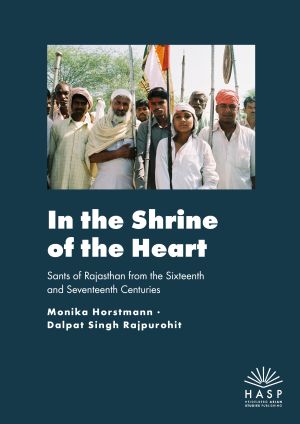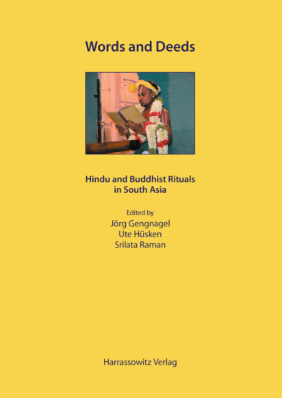Horstmann, Monika
In the Shrine of the Heart: Sants of Rajasthan from the Sixteenth and Seventeenth Centuries
In the early modern period, the Sants emerged in North India as devotees of a formless interior god. The volume introduces seven Sant authors living in Rajasthan in the period from the first half of the sixteenth to the eighties of the seventeenth century. It explores their complex cultural background, their literary conventions, and their sectarian network, and presents samples of their poetry in the original Hindi with English translations. By far the most of the compositions in this volume have not been translated before, and of one of these the original text is published also for the first time.
Sant poetry has been transmitted in oral and written form. It owes its continuing vitality largely to congregational and private performance. This fact has been illustrated by a number of audio and video samples.
Words and Deeds: Hindu and Buddhist Rituals in South Asia
Words and Deeds is a collection of articles on rituals in South Asia with a special focus on their texts and context. The volume presupposes that a comprehensive definition of “ritual” does not exist. Instead, the papers in it avoid essentialist definitions, allowing for a possible polythetic definition of the concept to emerge. Papers in this volume include those on Initiation, Pre-Natal Rites, Religious Processions, Royal Consecration, Rituals which mark the commencement of ritual, Rituals of devotion and Vedic sacrifice as well as contributions which address the broader theoretical issues of engaging in the study of ritual texts and ritual practice, both from the etic and the emic perspective. These studies show that any study of the relationship between the text and the context of rituals must also allow for the possibility that different categories of performers can and do subjectively constitute the relationship between their ritual knowledge and ritual practice, between text and context in differing and nuanced ways.
Early Modern India: Literatures and Images, Texts and Languages
This book presents recent scholarly research on one of the most important literary and historical periods of the Early Modern era from a wide range of approaches and perspectives. It contains a selection of contributions presented at the 12th International Conference on Early Modern Literatures of North India which provide fresh and new material as well as innovative methods to approach it. The organizing principle of the volume lies in its exploration of the links between a multiplicity of languages (Indian vernaculars, Persian, Sanskrit), of media (texts, paintings, images) and of traditions (Hindu, Jain, Sikh, Muslim). The role of the Persian language and the importance of the translations from Sanskrit into Persian are discussed in light of the translational turn. The relations between various yogic traditions, especially of Nath origin, from Kabir and other sampradayas, are reconsidered.
Reviews
Richard David Williams in: Orientalistische Literaturzeitung, 117, 4-5 (2022)










